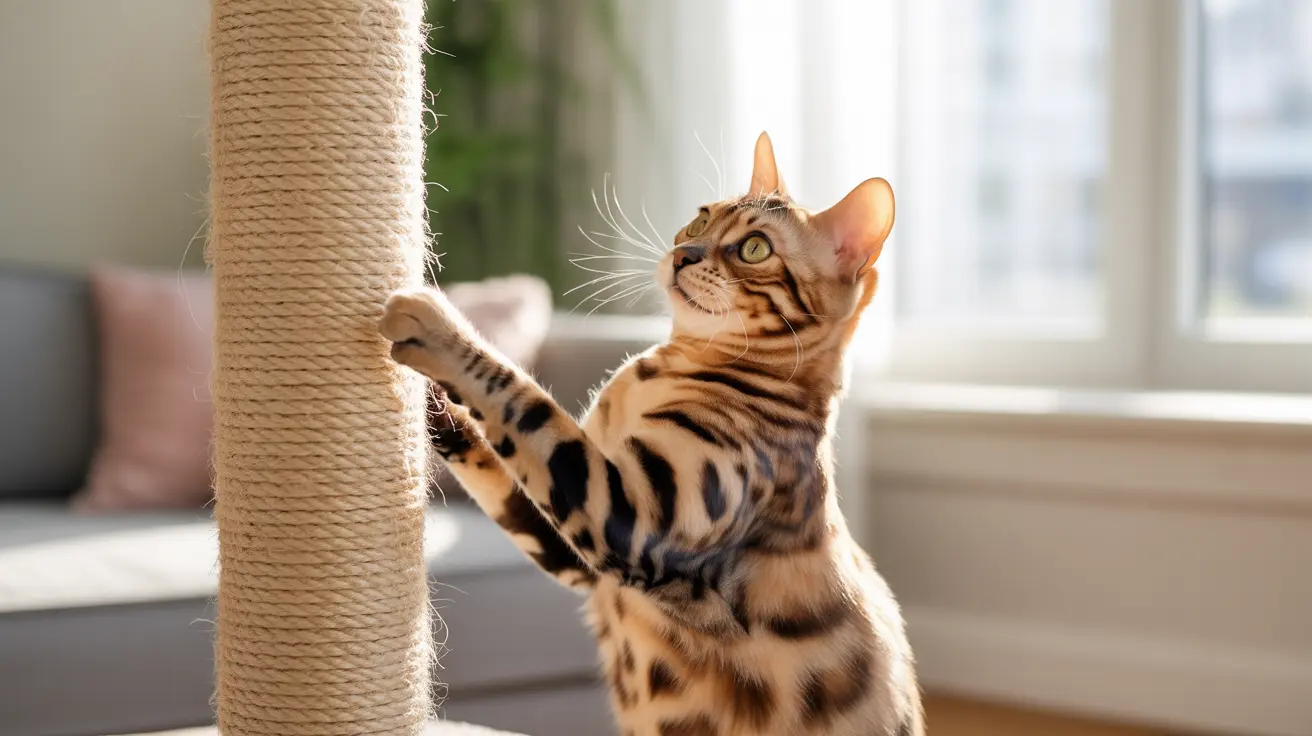The Science Behind Cat Paw Scent Glands
Cats' paw scent glands are part of an intricate communication system that nature has engineered. Located between the toes (interdigital space), these glands release pheromones - chemical signals that are invisible to humans but speak volumes to other cats.
When your cat scratches or kneads surfaces, they're not just exercising their claws - they're actually leaving behind their unique scent signature through these specialized glands.
How Cats Use Their Paw Scent Glands
Territorial Marking
One of the primary functions of paw scent glands is territorial marking. When cats scratch surfaces, they accomplish two things simultaneously:
- Visual marking through scratch marks
- Chemical marking through pheromone deposits
This dual-purpose marking helps cats establish and maintain their territory, communicating their presence to other felines in the area.
Social Communication
Paw scent glands also play a vital role in social interaction. When cats knead surfaces or people (often called "making biscuits"), they're not just showing contentment - they're also:
- Marking their preferred spaces and people
- Creating familiar, comfortable environments
- Establishing ownership and belonging
The Complete Picture: All Cat Scent Glands
While paw scent glands are important, they're just one part of a cat's complex scenting system. Cats have multiple scent glands located throughout their bodies, including:
- Facial glands (cheeks and forehead)
- Chin (submandibular) glands
- Tail base glands
- Anal glands
Managing Your Cat's Scent Marking Behavior
Understanding that scent marking through paw glands is natural and necessary can help you provide appropriate outlets for this behavior. Consider these tips:
- Place scratching posts near favorite resting spots
- Offer various scratching surfaces (vertical and horizontal)
- Use positive reinforcement when cats use appropriate scratching areas
- Consider synthetic pheromone products for stress reduction
The Role of Scent Glands in Cat Health
Changes in scent marking behavior can indicate health issues or stress. Watch for:
- Excessive scratching in new areas
- Sudden cessation of normal marking behavior
- Signs of anxiety or territorial disputes in multi-cat households
Frequently Asked Questions
Do cats really have scent glands in their paws, and what purpose do they serve?
Yes, cats have interdigital scent glands between their toes. These glands release pheromones that help cats mark territory and communicate with other cats, serving both social and territorial purposes.
Why does my cat scratch furniture and leave scent marks with their paws?
Cats scratch furniture to mark their territory both visually (with scratch marks) and chemically (through pheromones from their paw scent glands). This behavior is instinctual and helps them feel secure in their environment.
How do cats use the scent glands in their paws to communicate with other cats?
Cats deposit pheromones from their paw glands through scratching and kneading. These chemical signals can communicate territory boundaries, emotional state, and even mating availability to other cats.
What other parts of a cat's body have scent glands besides their paws?
Cats have scent glands in multiple locations, including their cheeks, chin, forehead, flanks, tail base, and anal area. Each set of glands serves specific communication purposes.
How can I manage or redirect my cat's scratching and scent-marking behavior effectively?
Provide appropriate scratching surfaces in strategic locations, use positive reinforcement, and ensure each cat in multi-cat households has access to their own marking areas. Consider synthetic pheromone products for anxiety-related marking.
Conclusion
Cat paw scent glands are fascinating components of feline communication. By understanding their purpose and importance, you can better support your cat's natural behaviors and create an environment that meets their instinctual needs for marking and territory establishment.
Remember that scent marking through paw glands is normal and necessary for cats' emotional well-being. Working with these natural behaviors, rather than against them, will lead to a happier, more harmonious relationship with your feline companion.






